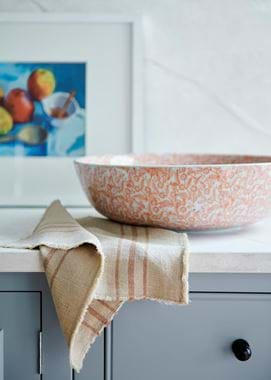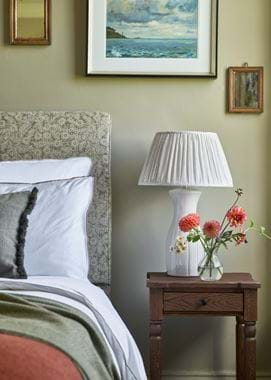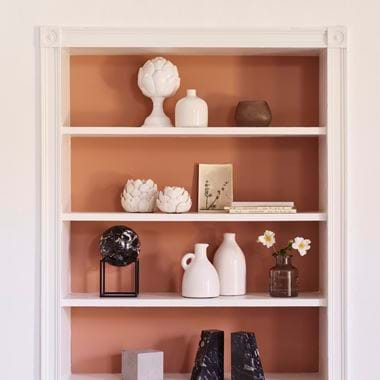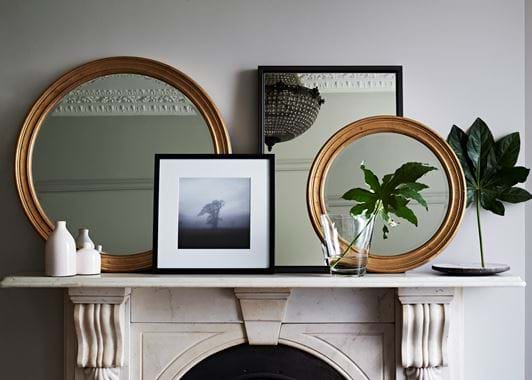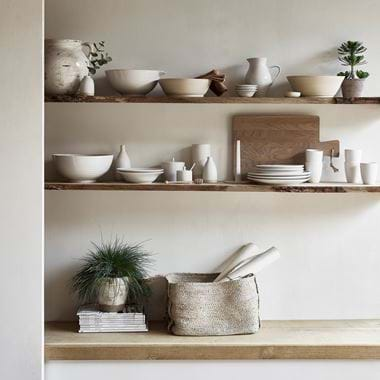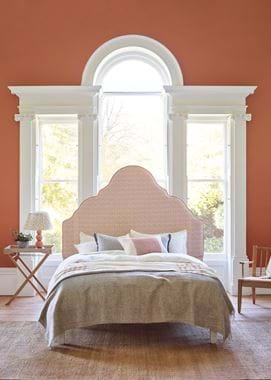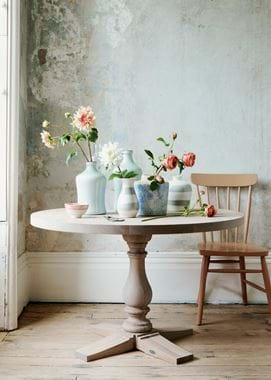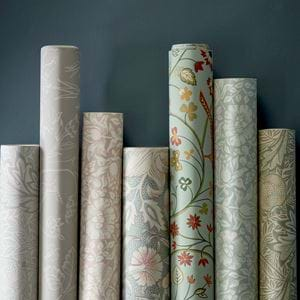Nature’s pattern book
Nature’s pattern book
Research into how people respond to pattern has repeatedly shown we find natural forms inherently pleasurable. From leafy fabric to floral artwork, humans are hard-wired to respond to the natural world and its motifs. What’s even more fascinating though, is that bringing nature’s pattern book into our homes not only looks great but can have a positive impact on wellbeing, reducing stress levels and helping us relax. Here are four patterns that humans find particularly pleasing:
Fractals
These are patterns that repeat the same shape but in different sizes. They appear in nature absolutely everywhere – think of a tree limb that divides into smaller branches and smaller twigs still, as well as leaf veins, rivers and streams, lightning, crystals, ferns, seedheads, even cloud formations. Psychologists and neuroscientists have found that we’re particularly good at visually processing fractals. In fact, our brains feel so at ease and comfortable when we look at fractal patterns that we find gazing at them actively soothing. Looking at natural fractals also seems to engage the parahippocampus, the part of the brain that’s involved with regulating emotions and is also active when we listen to music.
Try: our Orla linens; Olney crockery; Rowan Blossom stem; green Eucalyptus spray; Moss twig; and Lucknam prints.
Spirals
Imagine a snail shell. It starts off in the centre with a very tight curl. Each successive ‘ring’ gets wider and wider, growing the shell exponentially. This type of ‘golden spiral’ is found all over nature from molluscs to rams’ horns, spiders’ webs to the nerves of the cornea. Flowers and plants also display the golden spiral – the seedpods of a pine cone, for example, or the unfurled leaf of a fern. Even galaxy formations, breaking waves and hurricanes are formed in the shape of these fractal spirals. We don’t know why the natural world is full of golden spirals but what we do know is that people seem to like looking at them. One of the reasons may be that the golden spiral relates to the golden ratio, the well-known design formula that produces visually pleasing proportions.
Try: our Strobus pinecone, Gosse seahorse and Ashby artichoke ornaments; Lady Fern and Artichoke stems; and Lulworth crockery.
Curves
Neuroscientists have shown that people consistently like shapes with gentle curves much more than those with sharp points and hard edges. Why this is isn’t clear, but one idea is that the human brain is highly adapted for processing these particular kinds of shape in the natural world. Shallow, undulating and gentle curves remind us of living organisms, especially the movement and shape of muscles and soft tissue. The brain may have evolved to recognize and prefer these shapes as a survival advantage for recognizing prey and finding mates, whereas we ‘read’ hard, jagged-edged forms as inorganic or lifeless. Another possibility is that we associate sharp, hard patterns with discomfort or danger – the teeth of an animal, for example, or thorns of a plant.
Try: our Lara, Gabriela and Emma linens; Balmoral and Sheldrake dining tables; Bermondsey chopping boards; Sketch Seated prints; Chichester curved washstand; and Clemmie headboard.
Circles
There’s something deeply ingrained about the circle that makes it a special shape for humans. From not long after birth, babies show a clear preference for circles and contoured lines over straight ones. As adults, we’re also inclined to find round, large-eyed faces appealing; an ancient predisposition called ‘baby-face bias’. Circles also clearly abound in nature – from water bubbles to tiny seeds – but it’s interesting that perhaps our two most important natural cues, the sun and the moon, are also both circles. For most of our time on this planet, we would have lived our lives ruled by these two, awe-inspiring natural phenomena; it’s perhaps no wonder we’re drawn to their shape.
Try: our Circle prints; Lowther, Lewes and Bowsley crockery; Ashby apple ornament; Alconbury round vase; and Fleming mirrors.
Sally Coulthard is a best-selling author and columnist. Her books delve into history, nature and design – from a handbook on hedgehogs to a history of crafting – and she writes regularly for Country Living magazine about life on her smallholding in North Yorkshire. To read more from Sally on how to bring nature into your home, pick up her book ‘Biophilia: You + Nature + Home’.

